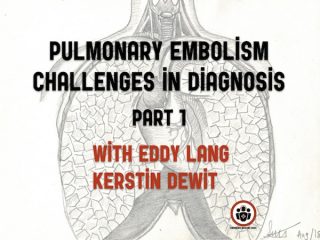Ep 113 Pulmonary Embolism Challenges in Diagnosis Part 1
Dr. Kerstin DeWit and Dr. Eddy Lang answer the questions that plague us on almost every shift: Which patients require any work-up at all for PE? What’s the utility of PERC and Well’s scores? Should the newer YEARS decision tool supplant Well’s? When should we order a D-dimer? What’s the diagnostic role of CXR, ECG, POCUS, CTA and VQ? How should we work up pregnant patients for PE? How can we use shared decision making strategies for PE to help us do what’s best for our patients, and many more...


